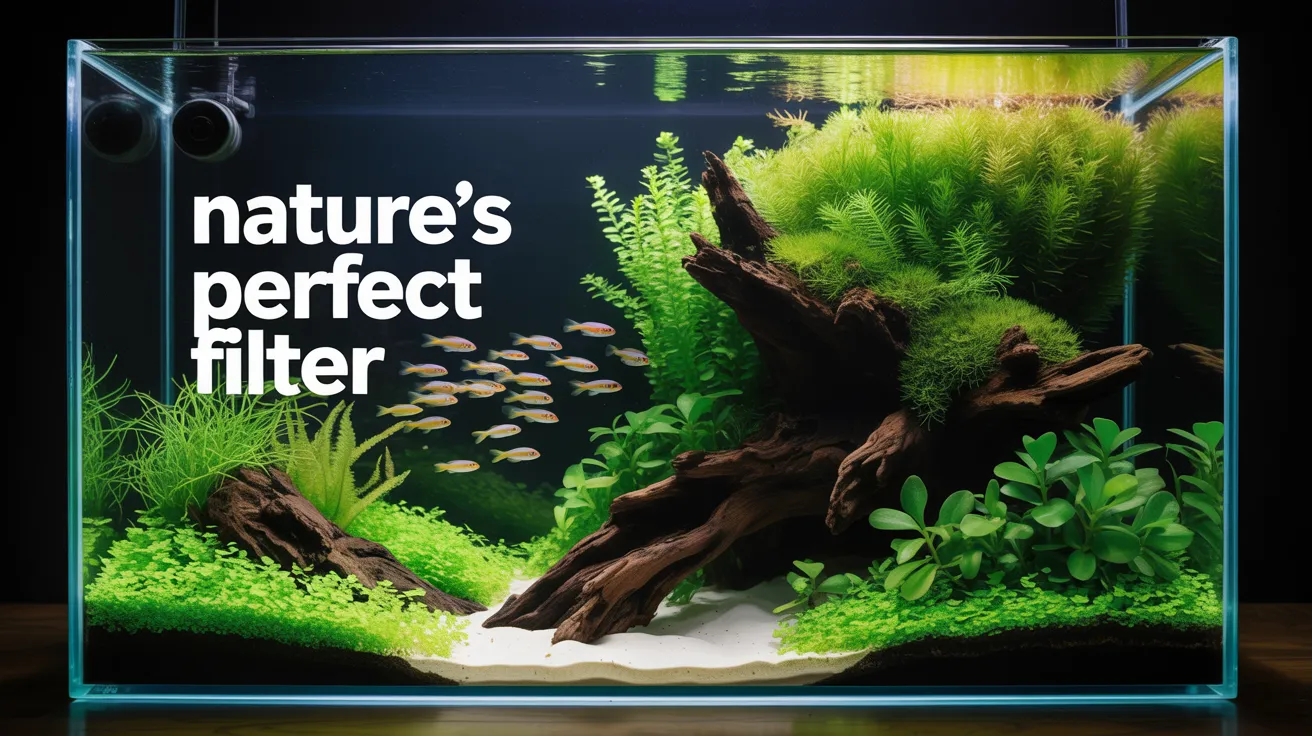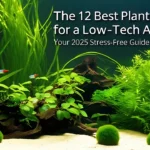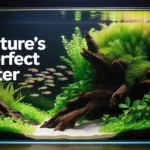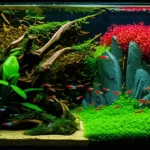Let’s have an honest chat about the nitrogen cycle in a low-tech aquarium. For so many beginners, this term is a source of major anxiety. It sounds complicated, scientific, and intimidating. It’s often presented as this invisible, dangerous hurdle you must overcome before you can even think about adding fish. But I’m going to let you in on a secret I’ve learned over many years in this hobby: the nitrogen cycle isn’t your enemy. It’s your tank’s secret superpower.
It’s the invisible engine that turns waste into life. It’s nature’s perfect recycling program. And the best part? In a low-tech planted aquarium, this cycle becomes more stable, more forgiving, and infinitely easier to manage.
So, forget the complex charts and the scary warnings for a moment. Today, we’re going to unravel the simple science of the nitrogen cycle through the unique, common-sense lens of a low-tech setup. You’re about to understand the heartbeat of your aquarium and learn how to work with it to create a thriving, stable, and beautiful underwater world.
What Is the Nitrogen Cycle, in Plain English?
Before we get into the details, let’s use an analogy. Imagine your aquarium is a tiny city. The residents (your fish) produce garbage (waste). If that garbage piles up on the streets, the city quickly becomes toxic and unlivable.
The nitrogen cycle is simply the city’s highly efficient, three-step sanitation department. It takes the toxic garbage, breaks it down, and turns it into something useful. That’s it. It’s a process of converting dangerous waste into a harmless—and even beneficial—substance.
Let’s meet the three main characters in this story:
- Ammonia (NH₃) – The Toxic Waste: This is where the cycle begins. Ammonia is released into your aquarium from a few key sources: fish waste (their version of urine), uneaten food that starts to rot, and any decaying organic matter like a melting plant leaf. In any significant concentration, ammonia is extremely toxic to fish. It burns their gills and skin, making it difficult for them to breathe. Our primary goal is to get this out of the water as quickly as possible.
- Nitrite (NO₂) – The Dangerous Middleman: As the first stage of cleanup begins, specific bacteria show up and consume the ammonia. As they process it, they release a new compound: nitrite. While it’s great that the ammonia is gone, nitrite is also highly toxic to fish. It damages their blood, preventing it from carrying oxygen effectively. So, while it’s a necessary step in the process, we don’t want it sticking around either.
- Nitrate (NO₃) – The End Product & Plant Food: Just as the nitrite levels start to rise, a second team of bacteria arrives to consume it. Their waste product is our final character: nitrate. Here’s the good news: nitrate is far, far less toxic to fish than ammonia or nitrite. In the small amounts typically found in a well-maintained aquarium, it’s virtually harmless. And for a planted tank, nitrate isn’t a waste product at all—it’s a critical fertilizer. It’s one of the primary nutrients your plants crave to grow lush and green.
So, the entire cycle is a simple chain reaction: Toxic Ammonia → Toxic Nitrite → Harmless Nitrate (Plant Food).
Also Read: The Ultimate Guide to Low-Tech Aquascaping (No CO2, No Stress!)
Also Read: 7 Key Benefits of Choosing a Low-Tech Aquascape for Your First Underwater Garden
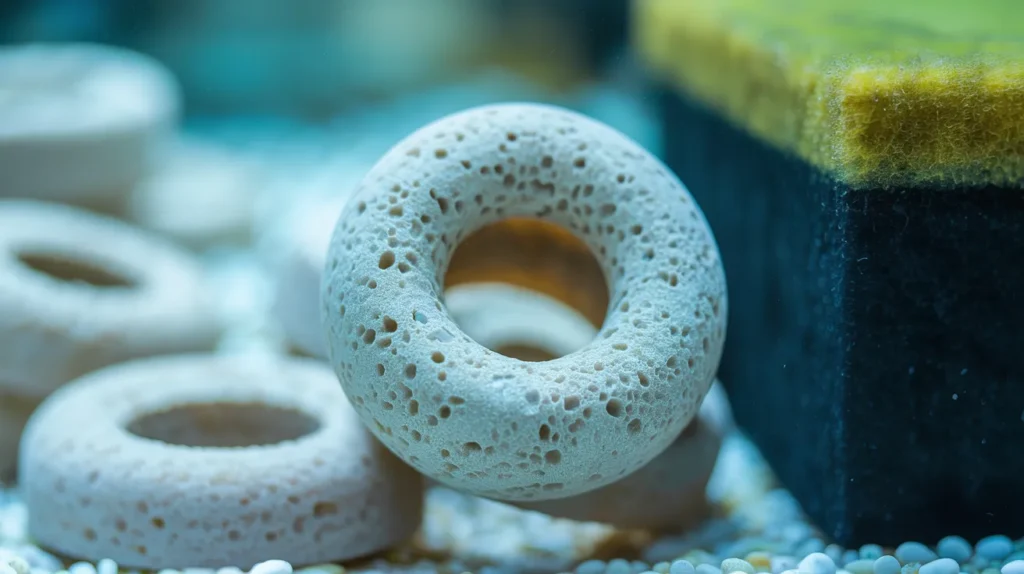
Meet Your Cleanup Crew: The Beneficial Bacteria
This conversion process doesn’t happen by magic. It is carried out by two amazing teams of naturally occurring, microscopic organisms that we collectively call “beneficial bacteria.” These are the unsung heroes of your aquarium.
- Team 1 (The Ammonia Eaters): A group of bacteria, primarily from the genus Nitrosomonas, are the first responders. They set up shop in your tank and their sole purpose is to consume ammonia.
- Team 2 (The Nitrite Eaters): Following closely behind are bacteria from the genus Nitrobacter. Their job is to consume the nitrite produced by the first team.
The key thing to understand is that these bacteria need a place to live. They are not free-swimming in the water in any significant numbers. They need to anchor themselves to a surface to colonize and build their populations. Where do they live? Everywhere.
The biggest populations live in your filter media (sponges, ceramic rings, bio-balls) because it has a massive surface area and a constant flow of oxygen-rich water. But they also live in your substrate (gravel, sand, aquasoil), on your hardscape (rocks and driftwood), and even on the glass of the tank itself. This large surface area is a key advantage for maintaining a stable nitrogen cycle in a low-tech aquarium.
The Nitrogen Cycle in a Low-Tech Aquarium: Why Plants Are Your Ultimate Ally
Now we arrive at the most important part of this discussion for any low-tech hobbyist. In a standard, non-planted fish tank, the bacterial process we just described is the only way ammonia gets processed. But in a planted tank, you have a powerful second pathway—a natural shortcut that makes the entire system exponentially more stable.
Plants consume ammonia directly.
Let that sink in. Your aquatic plants, especially fast-growing stem plants, will pull ammonia directly out of the water column to use as a source of nitrogen for their own growth. In fact, many plants prefer ammonia over nitrate.
This is a game-changer. It means that from the moment you add plants to your aquarium, you have an active, living filter that is competing with the bacteria to consume toxic ammonia. While your bacterial colonies are slowly growing and establishing themselves, your plants are already on the job, acting as a crucial safety net and preventing dangerous ammonia spikes. This is one of the primary benefits of choosing a low-tech aquascape.
Furthermore, plants also consume the final product of the cycle, nitrate. While nitrate is relatively harmless to fish, in high concentrations, it can still cause stress and lead to algae issues. Your plants see nitrate as a delicious meal. They will constantly absorb it from the water, keeping the levels naturally low and turning a potential waste product into beautiful, green growth.
This is the core philosophy of a low-tech setup in action, a principle famously detailed by ecologist Diana Walstad. You are creating a balanced ecosystem where different elements work together. The bacteria process waste, and the plants process the waste and the byproducts of the bacteria. It’s a self-regulating, elegant, and incredibly stable system.
“Cycling” Your Tank: A More Natural Approach
If you’ve done any research, you’ve likely read about the “fishless cycle,” a process where you add ammonia to an empty tank for 4-8 weeks to grow your bacterial colonies before adding any fish. While this is the gold standard for fish-only tanks, the process can look very different—and often much faster—in a heavily planted low-tech setup.
Because your plants are consuming ammonia from day one, you often won’t see the dramatic ammonia and nitrite spikes that occur in a non-planted tank. The cycling process can be much gentler, and is often referred to as a “silent cycle.”
Here is a practical, proven method for starting and cycling your low-tech planted tank:
- Setup Day: Set up your tank, including your substrate (a dirt or soil layer is fantastic for this), hardscape, and filter. Fill it with dechlorinated water.
- Plant Heavily: This is the most important step. Don’t just add one or two small plants. Add a lot! Pack it with easy, fast-growing plants like Hornwort, Guppy Grass, Pearl Weed, or various stem plants. The more plant mass you have, the more ammonia-absorbing power you have from the very beginning. You can find hardy plants like Anubias that thrive in these conditions.
- Just Wait: Let the tank run for 1-2 weeks with the lights on a normal schedule. During this time, small amounts of ammonia will be naturally released as the plants settle in and shed a few old leaves (this is called “melt”). This provides a gentle, slow food source to begin cultivating your bacterial colonies without endangering any fish.
- Test Your Water: After a week or two, test your water parameters using a liquid test kit (they are far more accurate than paper strips). You are looking for zero ammonia, zero nitrite, and possibly a small reading of nitrate.
- Introduce Livestock Slowly: Once your water tests show the cycle is active (0 ammonia, 0 nitrite), you can start adding your inhabitants. Don’t add everyone at once! Start with a few hardy fish or a cleanup crew of snails. This forgiving nature creates a stable home for peaceful community fish like Ember Tetras. Wait another week, test the water again, and if everything is still stable, you can add a few more. This slow introduction allows your biological filter to gradually adjust to the increasing bioload.
Maintaining the Cycle: Simple Habits for Long-Term Success
Maintaining a healthy nitrogen cycle in a low-tech aquarium isn’t about complex procedures; it’s about a few good habits.
- Don’t Overfeed: This is the number one rule. Only feed your fish what they can completely consume in a minute or two. Any leftover food will rot and produce ammonia.
- Don’t Overstock: Be realistic about how many fish your tank can comfortably support. An overstocked tank will produce more waste than your biological filter can handle.
- Care for Your Filter: When doing maintenance, never wash your filter media (sponges, etc.) in chlorinated tap water, as this will kill your beneficial bacteria. Instead, gently swish it around in the bucket of old tank water you removed during a water change to dislodge any heavy debris.
- Perform Gentle Water Changes: Regular small water changes (20-30% weekly or bi-weekly) are beneficial. They don’t just lower nitrates; they replenish essential minerals that your plants and invertebrates use up over time.
How do I know for sure that my tank is cycled?
The only way to know for sure is by testing your water. A fully cycled tank will consistently show readings of 0 ppm (parts per million) for ammonia and 0 ppm for nitrite. You will likely have a nitrate reading somewhere between 5-20 ppm, which is a perfect range for a planted tank.
Do I still need a filter if I have a lot of plants?
Yes, it is highly recommended. While your plants do a lot of the heavy lifting for ammonia and nitrate removal, a filter provides three critical functions: mechanical filtration (removing floating debris), chemical filtration (if you choose to use it, like with carbon), and most importantly, providing consistent water circulation and a prime home for your beneficial bacteria colonies.
What are the signs of an ammonia spike in an established tank?
The first signs are usually in your fish’s behavior. They may become lethargic, gasp for air at the surface, show red or inflamed gills, or lose their appetite. If you see these signs, test your water immediately. A large, immediate water change is the best first aid for an ammonia spike.
Can I use bottled bacteria products to speed up my cycle?
You can. Products that contain live nitrifying bacteria can help “seed” your aquarium and may speed up the establishment of your bacterial colonies. However, they are not a magic bullet. In a low-tech setup, heavily planting from day one is often just as, if not more, effective.
My test kit shows my nitrates are always at zero. Is this a good thing?
In a fish-only tank, yes. But in a low-tech planted tank, a consistent reading of zero nitrates might actually be a sign that your plants are nutrient-limited. It means they are consuming the nitrate as fast as it’s being produced. If your plants start to look pale, yellow, or their growth stalls, a lack of nitrates could be the cause. You may even need to add a comprehensive fertilizer that contains nitrates to keep them healthy.
Conclusion: Your Role as an Ecosystem Gardener
The nitrogen cycle is not a complex chemical equation to be feared. It is the beautiful, invisible dance of life, death, and recycling that happens in every natural ecosystem on the planet, including the one in your living room.
By choosing a low-tech planted aquarium, you are choosing to work in partnership with this cycle. You are using plants—nature’s ultimate water purifiers—to create a system that is not just a collection of fish and decorations, but a balanced, self-regulating ecosystem. You are no longer just a fish keeper; you are a gardener, cultivating the health of the entire system from the microscopic bacteria to the largest plant.
Embrace it, understand it, and you’ll find it’s the key to a truly rewarding and stress-free experience in this wonderful hobby.
